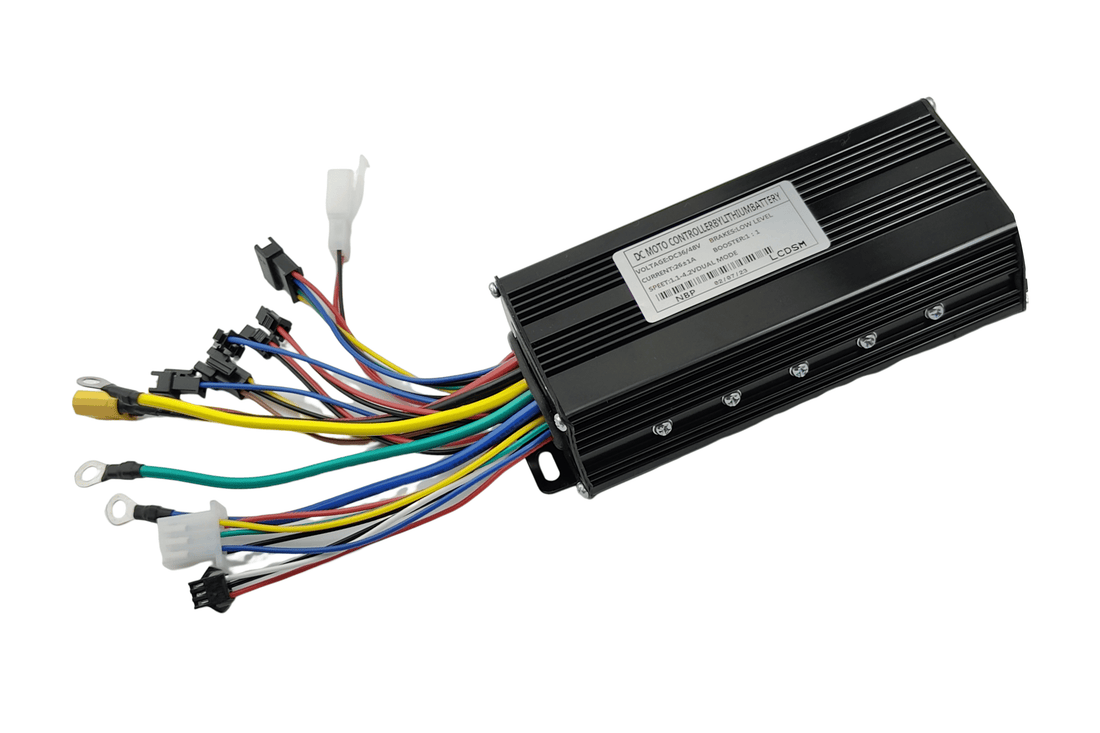
Sine Wave vs Square Wave
Share
When it comes to building an electric bike, choosing the right controller is crucial for achieving the desired performance and efficiency. There are two main types of motor controllers available in the market - sine wave and square wave. In this blog post, we will explore the differences between the two and help you decide which one is best suited for your electric bike.
First, let's take a look at what sine wave and square wave controllers are. A sine wave controller provides a smooth and continuous output of current to the motor, resulting in a quieter and more efficient operation. Sine wave controllers are designed to replicate the natural sine wave pattern of AC power, which makes them ideal for applications that require precise control and low noise.
On the other hand, a square wave controller provides a pulse-like output of current to the motor, resulting in a more abrupt and less efficient operation. Square wave controllers are designed to provide high power outputs at low frequencies, which makes them ideal for high-torque applications that require a burst of power, such as starting a heavy load.
So, what are the main differences between sine wave and square wave controllers?
- Efficiency
Sine wave controllers are generally more efficient than square wave controllers. They provide a smoother and more continuous output of current to the motor, which reduces motor noise and heat buildup. In contrast, square wave controllers produce more heat and noise due to the abrupt changes in current output.
- Motor performance
Sine wave controllers provide smoother and more precise control over the motor, resulting in a more responsive and efficient operation. They can achieve higher speeds and torque output, which makes them ideal for applications that require precise control over the motor, such as racing or off-road riding. In contrast, square wave controllers are designed to provide high-torque output at low speeds, which makes them ideal for applications that require a burst of power, such as hill climbing or heavy load transportation.
- Cost
Sine wave controllers are generally more expensive than square wave controllers due to their advanced design and higher efficiency. Square wave controllers are simpler in design and easier to manufacture, which makes them more affordable.
- Noise
Sine wave controllers provide a quieter operation due to the smooth and continuous output of current. In contrast, square wave controllers produce more noise and vibration due to the abrupt changes in current output.
- Compatibility
Not all motors are compatible with both sine wave and square wave controllers. Some motors require specific types of controllers, so it is important to check the compatibility before purchasing a controller.
In conclusion, choosing between a sine wave and square wave controller depends on your specific needs and requirements. If you want a smooth and efficient operation with precise control over the motor, a sine wave controller is the way to go. On the other hand, if you require high-torque output at low speeds, a square wave controller is a better option. Whichever controller you choose, make sure it is compatible with your motor and meets your budget and performance needs.




3 comments
To me it seems like the sine wave is the best and safer way to go. Because the square wave controllers cheaper and are known to be noisy with a lot of heat buildup which is the main reason for a lot of people bikes catching on fire. Get a sine wave controller and be stress free without the worry if you’re going to catch a fire while riding.
I’ve used both kinds on my 72v ebike. I shunt modded both 60a controllers. The square wave burned up a mosfet so I replaced it with a sine wave, which is still going strong. The square wave definitely had more low end torque and acceleration, but the sine wave is no slouch on the low end. It will still hit 30mph in about 8 seconds. Top speed was the same for both, about 50mph. I kinda miss the noise of the square. It actually sounded like an electric motorcycle, which was sorta cool. Everyone looked when I rode past as if it was a tesla on 2 wheels. My sine is DEAD QUIET and draws ZERO attention, which is also nice. These are all the benefits and drawbacks I could think of.
Hi looking to upgrade my 48v 250w EB 2 Fat bike with a new controler and display which one would be the best for my motor
Kind regards Martin